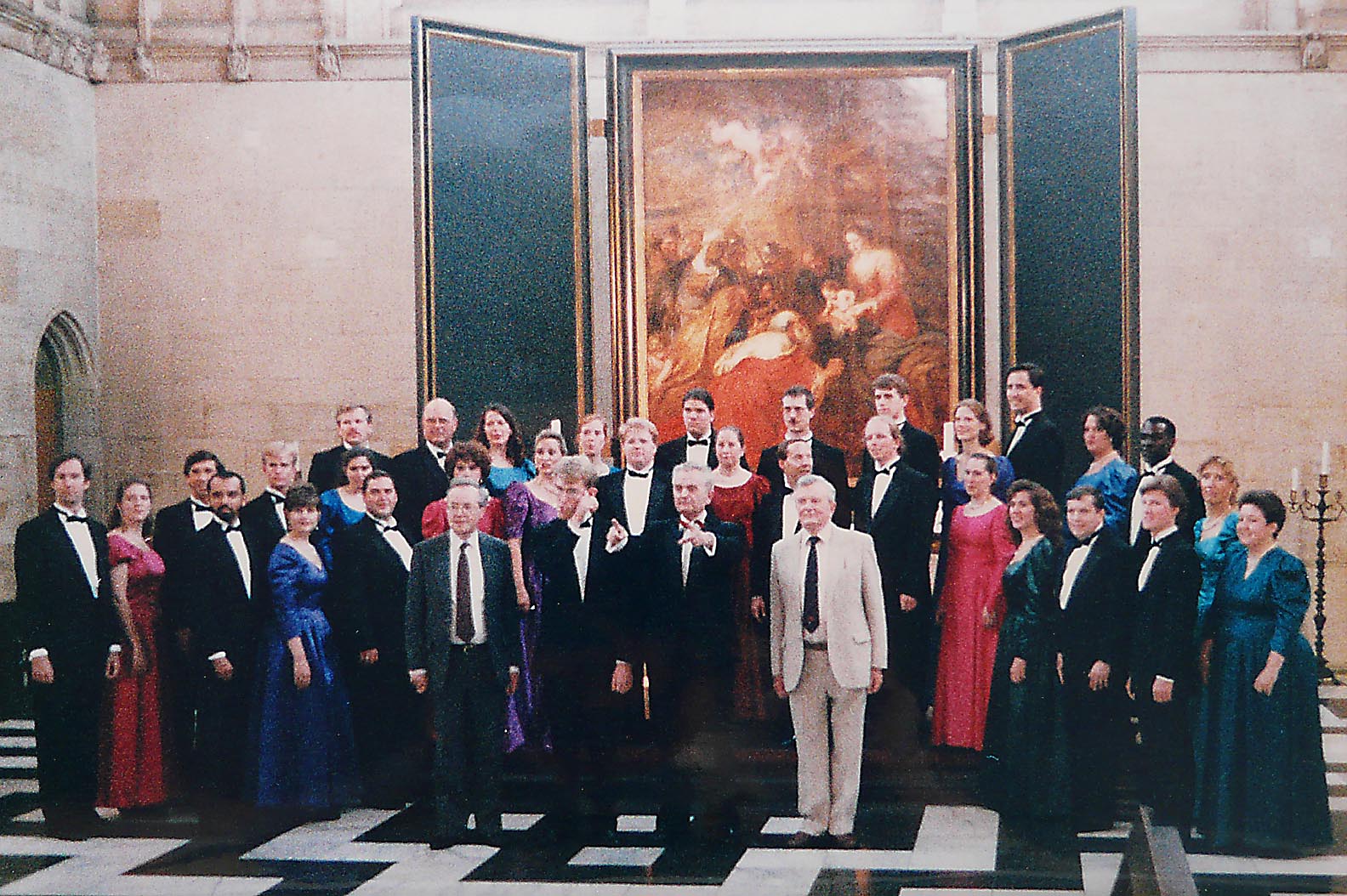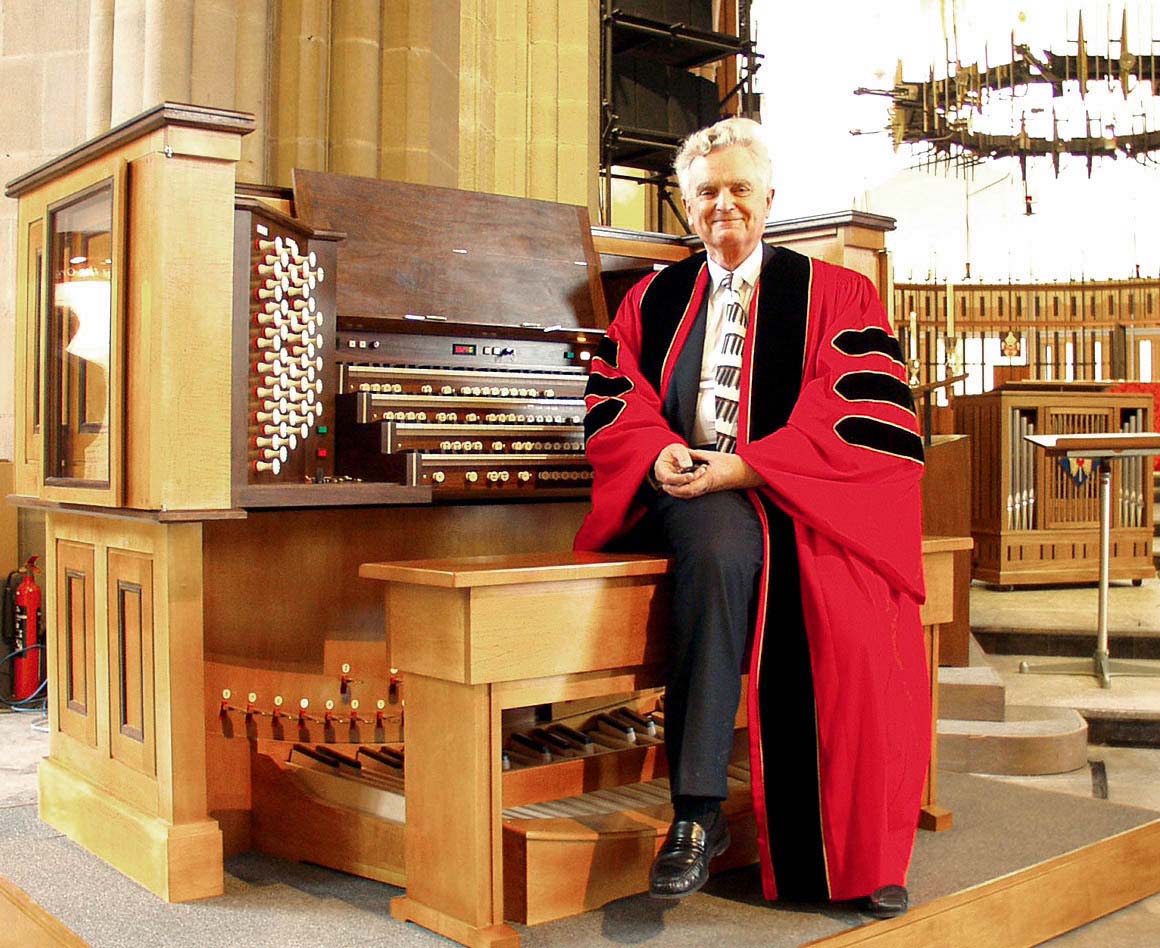How to transform your choir
and fill your stalls
with enthusiastic singers
6. Rule of Three

John Bertalot (formerly of Blackburn Cathedral)
Neil Taylor (Sheffield Cathedral) and Richard Tanner (Blackburn Cathedral) celebrating Richard's 40th birthday!
CHALLENGE – THE RULE OF THREE

Do you challenge your choir when you take them for a rehearsal? Or, to put it another way, do you enable your choir to sing even better than they think they can?
STAND TOGETHER

For example, the very first thing I do with my village church choir (after chatting with them individually as they arrive fully ten minutes before the rehearsal is due to begin – punctuality isn’t a problem!) is to get them to stand up together. This brings them immediately to ‘attention’ – everyone can feel that within those first few important seconds for, by making the effort to stand togther, they will have focussed themselves upon what we are about to do.
SING TOGETHER – HOW?
And then we sing warm-ups – unaccompanied, of course. (That in itself is a challenge.) But am I satisfied at the way they sing their first warm-up? No! I immediately challenge them to sing that warm-up better. I might ask them, “Did you start together?” (The answer’s always ‘No’!) “Let’s try it again – breathe exactly one beat before you sing. One-two-ready-breathe!”

Am I satisfied with that? No! I encourage them to try even harder. (That’s the secret of leading a really constructive rehearsal.) “That was nearly together; perhaps you’d like to start absolutely together!” I wait for three seconds to allow them consciously to feel even more focussed, and then they sing it again and, or course, it’s even better.
RULE OF THREE

Now that’s an illustration of one of the most productive techniques I’ve discovered: The Rule of Three.
My choir has to sing a passage three times before I, and they, are satisfied. It’s no good saying, “I’d like that passage sung softer, please,” for they may sing it a little softer, but not as softly as they could. Therefore they need to do it again. “Was that really soft?” No! But still I’m not satisfied, so I might ask them to sing the first chord of that passage together and sustain it, listening to themselves, until they all realise what soft singing really means.
Once they’ve experienced singing the first chord really softly, they can sing the whole passage once more – and they are thrilled with what they’ve achieved. In other words, they’re singing better than they thought they could. That’s what a rehearsal should encourage singers to do. Once they’ve experienced that thrill they will be keen to come to their next rehearsal with you to sing even better.
That’s why the members of my village church choir arrive so early, for they want to experience that thrill again and again. And what’s true for me and my choir can also be true for you and your choir.
What other challenges can you give your choir?
SINGERS WANT TO SING THE RIGHT NOTES
Singing the right notes: “Sopranos, what note wasn’t wholly right in that bar? Did you sing it too high or too low? Let’s try it again.” They do, but not everyone sings it correctly. Therefore isolate that note so that they can all experience what it should sound like. “Sing that note by itself – here it is on the piano. Now sing the note before it and then the note itself so that you can feel how they relate.” And then you ask them to sing that passage once by themselves, and then in context with the other singers. The Rule of Three always works.

Dorchester
When I led a rehearsal for a small church choir near Dorchester in the South of England a few years ago, one of the basses came up to me afterwards to thank me for helping him to sing the right notes. Apparently their choirmaster didn’t do that, either because she couldn’t hear when the notes were wrong, or because she didn’t think it mattered very much. His enthusiasm had grown visibly during our rehearsal for he discovered that he could sing the notes correctly. In other words, he could sing better than he thought he could.
Singers don't join a choir to sing wrong notes, they join to sing right ones, and the only person who can help them to do this is you, their choirmaster. And singers don't sing wrong notes on purpose, they sing them because they don't know how to sing them correctly - so endless patience on your part is called for. And they'll thank you for enabling them to do this, as that bass thanked me.
GIVE A CHORD ONCE ONLY!
How often do you give a chord on the piano when you ask your choir to sing, or to repeat a passage? It’s something we all do automatically. But when rehearsing my church choirs in the USA I fought against that temptation and so I used to say, when rehearsing an unaccompanied anthem. “Go back to the bottom of page two and begin on the first chord without me playing it for you.” I waited for a few seconds so that they could work out their notes for themselves, and then we began.
You may think that this is putting an unnecessary obstacle in front of one’s singers, but no, my choirs actually enjoyed that challenge. I received an e mail from one of my former choirmen in which he wrote, "Your non-playing the piano method should be used by more choirmasters. I still resent it when we get too many piano cues in rehearsal. Your method requires a higher level of attentiveness and awareness."
TOTAL ATTENTION

And that’s what you’re asking your singers to do: to give you their whole attention and to think creatively for themselves.
So try it when your choir has sung a verse of a hymn (unaccompanied, of course). “The last two lines weren’t wholly together. Let’s go back to the beginning of the third line and sing it again, without me giving you the chord.” Wait for a few seconds so that they can work out what their notes should be and then bring them in. “Was that wholly right?” (No!) “Let’s try it again.” “That’s better; now sing the whole verse without me giving you the chord.”
In other words, you will have used the Rule of Three – getting them to sing a passage three times, but to sing it better each time because you challenge them, very clearly, what to aim for each time.
And so you’ll find that your choir’s attention and enthusiasm will increase by leaps and bounds because, by challenging them and by using the Rule of Three, you are enabling them to sing better than they think they can.
Try it!
© John Bertalot, Blackburn 2013






















